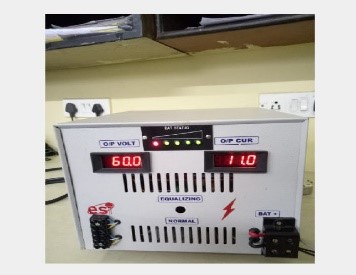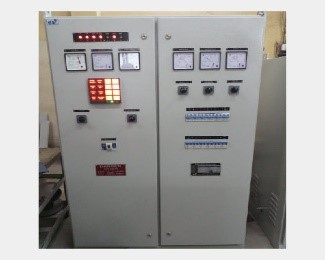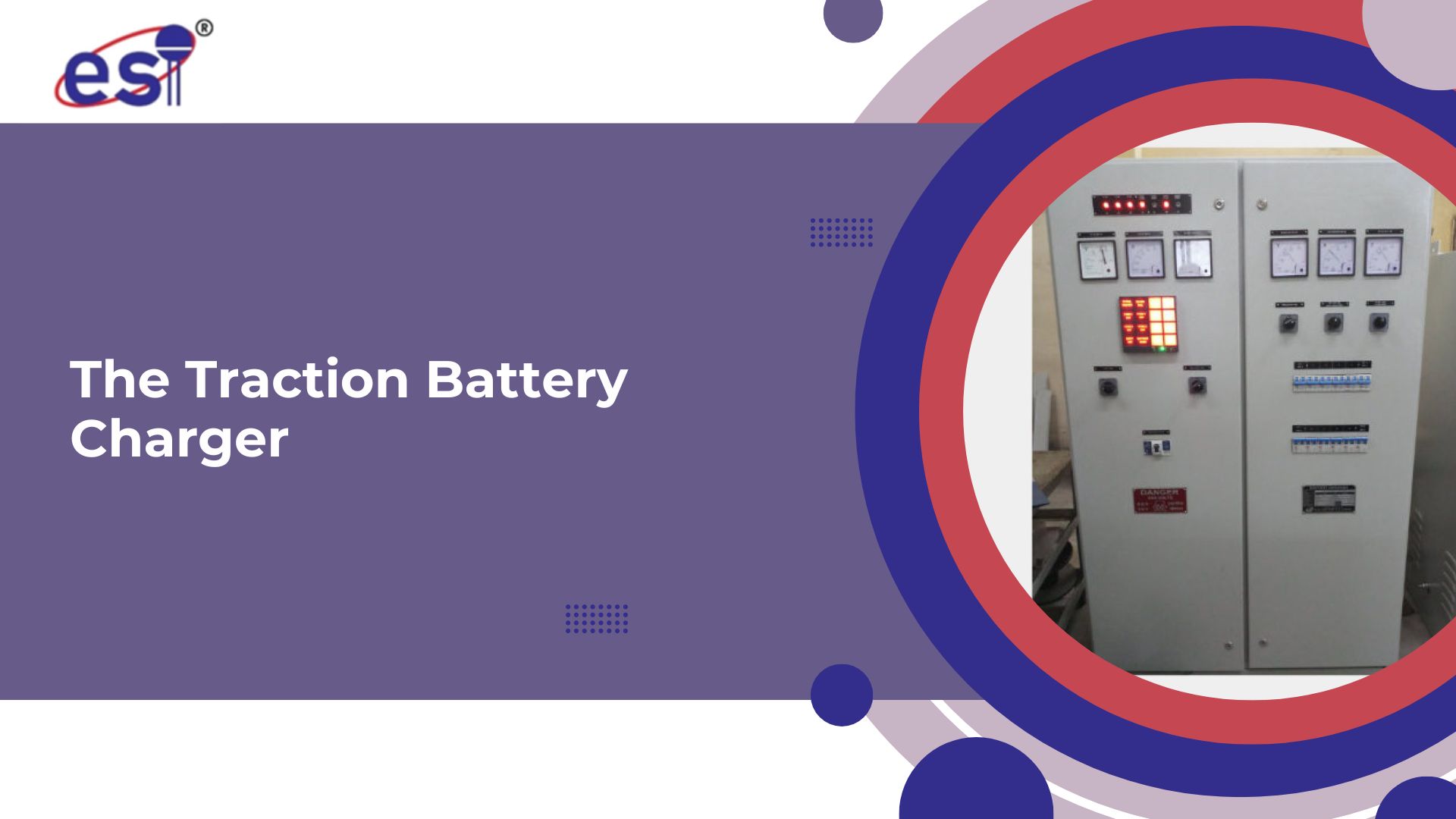A traction battery charger is a device specifically designed to charge traction batteries.
These chargers typically operate on standard AC input and are engineered for deep cycling, allowing for fast charging within 24 hours.
Traction battery chargers work by converting AC from electrical grid to DC that can be used to charge the battery. The charger is connected to the battery and electrical grid and it manages the charging process to ensure that the battery is charged safely and efficiently.
They are available in various models to accommodate the different battery types including lead acid and lithium based batteries ,and are used in diverse industries such as Material Handling Vehicles, Battery operated vehicles, Golf Cart and heavy duty eco-friendly Battery operated goods carrying Vehicles.
The Key Components of a Traction Battery Charger include
- Charging Circuit: This circuit converts AC to DC and regulates voltage and current for safe charging.
- Control Unit: Monitors battery status and controls the charging profile to prevent overcharging.
- Cooling System: Dissipates generated-heat during charging to maintain optimal thermal stability.
- Connectors and Cables: Facilitates secure connections to the battery and ensure efficient power transfer.
- Safety Features: Incorporates fuses and circuit breakers for protection against short-circuit and over-load.
How Do I Correctly Charge Traction Batteries?
Batteries are often referred to as the ‘heart of the electric lifting truck’. It is important to pay attention to the charging process for efficient and safe charging.
We suggest:
a) It is best to charge your battery immediately after the discharge. Do not leave your traction batteries stored in an uncharged condition.
b) Batteries should not be discharged beyond 80% of their rated capacity. A deeper discharge leads to wear of the active mass and results in a lower effective capacity.
How Long Should My Traction Battery Charge?
There is no univocal reply to that question. The charging time of your battery depends on the charge factor on the one hand, and the type of charger on the other hand.
What Is Charge Factor?
Charging is battery is done by putting in more energy than what was consumed. The CF (charge factor) of a battery is the ratio between the charging ampere hours and the ampere hours (Ah) that were consumed. Most batteries have a charge factor of 1.2
If a Traction Battery with a rated capacity of 1000AH is being discharged up to 80%(800 AH) of its capacity then the Charge Factor (CF) of 1.2 will be 1.2 x 800 AH = 960 AH must be put back into the battery.
The Different Types Of Traction Battery Chargers
Different types of Traction Battery Chargers are available in the market. In addition to the conventional or low-frequency charger, another common option is a high-frequency charger. A high-frequency with micro-controller based charger has become very popular now a days. It charges batteries faster than a conventional charger. Thanks to the intelligent charging technology, batteries last longer. A high-frequency charger charges efficiently and prevents premature failure of the battery.
Risks When Charging A Traction Battery
When charging your traction batteries, there are some risks to take into account.
- Heat: Heat is generated when charging a battery. If too much heat is generated, a fire can start.
- Oxyhydrogen: Charging wet batteries produces hydrogen, generated by the electrolysis of the electrolyte. In combination with the oxygen in the air, the released hydrogen (H2) can form an explosive mixture (oxyhydrogen). Hydrogen is lighter than air and rises to the highest point. That is why sufficient ventilation must always be provided when charging.
- Sparks: When you disconnect a battery from the charger while it is powered, sparks can be generated. These sparks can cause the formed oxyhydrogen to explode.
Prevention Methods While Charging A Traction Battery
- Provide a separate charging area.
- Remove flammable material in the vicinity of the battery and charger.
- Ventilate the charging area as much as possible. This way you prevent oxyhydrogen from accumulating.
- Prohibit smoking, welding or grinding in the charging zone.
- Provide an explosion-proof electrical installation (lighting, sockets).
- Prevent short circuits: never place metal objects on the battery.
- Place the charger on a support if possible. This way you prevent dust from accumulating and causing a fire.
- Check the charging cables and have them repaired immediately if you detect any damage.
- Switch off the charger before connecting or disconnecting the battery.
When charging a traction battery, it is important to follow the instructions provided by the battery and traction battery charger manufacturers. This includes personal protective equipment such as eye goggles, rubber gloves and a nose mask to avoid contact with the battery acid.
Please find below the pictures of traction battery chargers manufactured by ESI.


It is important for using the correct charger for the specific battery type to avoid damage of the battery and charger. In case of any query, please feel free to write to us at electroserviceindia@gmail.com and also, to enable us to offer you the appropriate traction battery charger.

